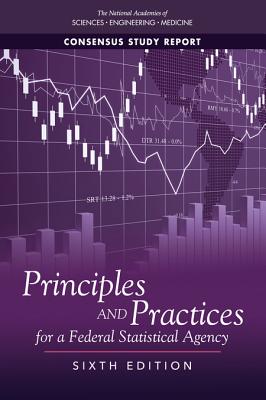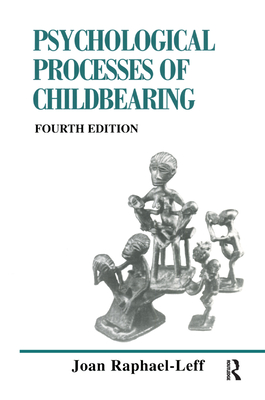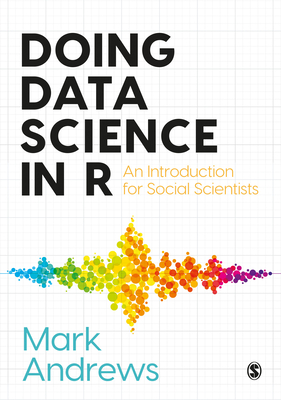Publicly available statistics from government agencies that are credible, relevant, accurate, and timely are essential for policy makers, individuals, households, businesses, academic institutions, and other organizations to make informed decisions. Even more, the effective operation of a democratic system of government depends on the unhindered flow of statistical information to its citizens. In the United States, federal statistical agencies in cabinet departments and independent agencies are the governmental units whose principal function is to compile, analyze, and disseminate information for such statistical purposes as describing population characteristics and trends, planning and monitoring programs, and conducting research and evaluation. The work of these agencies is coordinated by the U.S. Office of Management and Budget. Statistical agencies may acquire information not only from surveys or censuses of people and organizations, but also from such sources as government administrative records, private-sector datasets, and Internet sources that are judged of suitable quality and relevance for statistical use. They may conduct analyses, but they do not advocate policies or take partisan positions. Statistical purposes for which they provide information relate to descriptions of groups and exclude any interest in or identification of an individual person, institution, or economic unit. Four principles are fundamental for a federal statistical agency: relevance to policy issues, credibility among data users, trust among data providers, and independence from political and other undue external influence. Principles and Practices for a Federal Statistical Agency: Sixth Edition presents and comments on these principles as they've been impacted by changes in laws, regulations, and other aspects of the environment of federal statistical agencies over the past 4 years. Table of ContentsFront MatterExecutive SummaryPart I: IntroductionBackgroundDefinition of a Federal Statistical AgencyEstablishment of a Federal Statistical AgencyBrief History of the U.S. Federal Statistical SystemValuing Federal StatisticsReferences for Part IPart II: Principles for a Federal Statistical AgencyPrinciple 1: Relevance to Policy IssuesPrinciple 2: Credibility among Data UsersPrinciple 3: Trust among Data ProvidersPrinciple 4: Independence from Political and Other Undue External InfluenceReferences for Part IIPart III: Practices for a Federal Statistical AgencyPractice 1: A Clearly Defined and Well-Accepted MissionPractice 2: Necessary Authority to Protect IndependencePractice 3: Use of Multiple Data Sources for Statistics That Meet User NeedsPractice 4: Openness about Sources and Limitations of the Data ProvidedPractice 5: Wide Dissemination of DataPractice 6: Cooperation with Data UsersPractice 7: Respect for the Privacy and Autonomy of Data ProvidersPractice 8: Protection of the Confidentiality of Data Providers' InformationPractice 9: Commitment to Quality and Professional Standards of PracticePractice 10: An Active Research ProgramPractice 11: Professional Advancement of StaffPractice 12: A Strong Internal and External Evaluation ProgramPractice 13: Coordination and Collaboration with Other Statistical AgenciesReferences for Part IIIAppendixesAppendix A: Legislation and Regulations That Govern Federal StatisticsAppendix B: Organization of the Federal Statistical SystemCommittee on National Statistics
Publicly available statistics from government agencies that are credible, relevant, accurate, and timely are essential for policy makers, individuals, households, businesses, academic institutions, and other organizations to make informed decisions. Even more, the effective operation of a democratic system of government depends on the unhindered flow of statistical information to its citizens.
In the United States, federal statistical agencies in cabinet departments and independent agencies are the governmental units whose principal function is to compile, analyze, and disseminate information for such statistical purposes as describing population characteristics and trends, planning and monitoring programs, and conducting research and evaluation. The work of these agencies is coordinated by the U.S. Office of Management and Budget. Statistical agencies may acquire information not only from surveys or censuses of people and organizations, but also from such sources as government administrative records, private-sector datasets, and Internet sources that are judged of suitable quality and relevance for statistical use. They may conduct analyses, but they do not advocate policies or take partisan positions. Statistical purposes for which they provide information relate to descriptions of groups and exclude any interest in or identification of an individual person, institution, or economic unit.
Four principles are fundamental for a federal statistical agency: relevance to policy issues, credibility among data users, trust among data providers, and independence from political and other undue external influence. Principles and Practices for a Federal Statistical Agency: Sixth Edition presents and comments on these principles as they've been impacted by changes in laws, regulations, and other aspects of the environment of federal statistical agencies over the past 4 years.
Get Principles and Practices for a Federal Statistical Agency by at the best price and quality guranteed only at Werezi Africa largest book ecommerce store. The book was published by National Academies Press and it has pages. Enjoy Shopping Best Offers & Deals on books Online from Werezi - Receive at your doorstep - Fast Delivery - Secure mode of Payment
 Jacket, Women
Jacket, Women
 Woolend Jacket
Woolend Jacket
 Western denim
Western denim
 Mini Dresss
Mini Dresss
 Jacket, Women
Jacket, Women
 Woolend Jacket
Woolend Jacket
 Western denim
Western denim
 Mini Dresss
Mini Dresss
 Jacket, Women
Jacket, Women
 Woolend Jacket
Woolend Jacket
 Western denim
Western denim
 Mini Dresss
Mini Dresss
 Jacket, Women
Jacket, Women
 Woolend Jacket
Woolend Jacket
 Western denim
Western denim
 Mini Dresss
Mini Dresss
 Jacket, Women
Jacket, Women
 Woolend Jacket
Woolend Jacket
 Western denim
Western denim
 Mini Dresss
Mini Dresss






























































